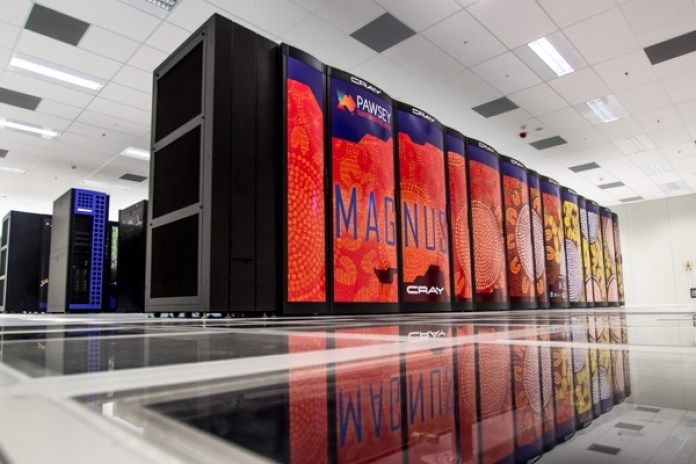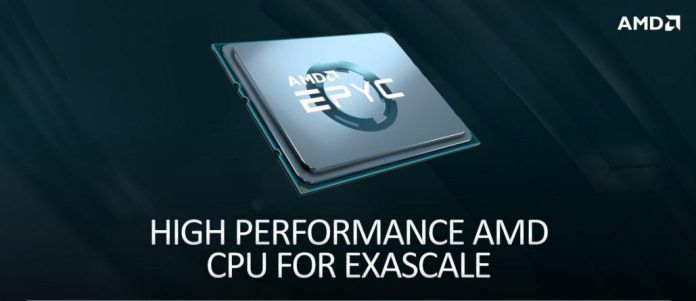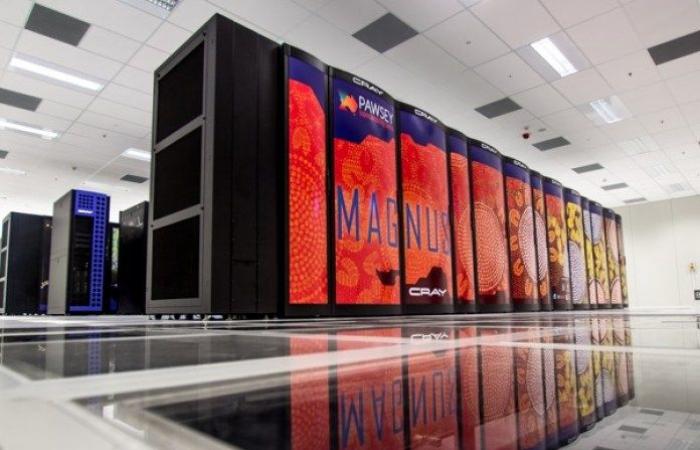AMD’s next-generation EPYC CPUs and Radeon Instinct GPUs are designed to power the LUMI (Large Unified Modern Infrastructure) supercomputer, which will be fully functional by 2021 and is based in Kajaani, Finland.
AMD is ready to power EuroHPC’s LUMI supercomputer with its next-generation EPYC CPUs and Radeon Instinct GPUs
The LUMI supercomputer was announced by HP (Hewlett Packard Enterprise) and will use its HPE Cray EX architecture to deliver more than half an exaflop of performance. The supercomputer will be based in Finland and will be part of EuroHPC’s GPU-accelerated supercomputing platform, which will feature next-generation AMD EPYC CPUs and Radeon Instinct GPU accelerators. LUMI is expected to be fully functional by the end of 2021 and to be among the top 5 supercomputers, including the AMD-powered El Capitan and Frontier supercomputers, which have 1.5 to 2.0 exaflops of computing power.
“AMD is proud to partner with HPE to co-operate the upcoming LUMI supercomputer to advance scientific research in artificial intelligence, weather forecasting, pharmaceutical discovery and more,” said Forrest Norrod, senior vice president and general manager of the data center and the Embedded Systems Group. AMD. “Our AMD EPYC CPUs and AMD Instinct GPUs of the next generation in connection with the unique supercomputing technologies from HPE offer new possibilities for high-performance computing. We look forward to strengthening the European research community with our support. ”About HPE
Some of the main highlighted features of the LUMI supercomputer are:
- Powerful computing with targeted AI skills Utilizing next generation AMD EPYC CPUs and AMD Instinct GPUs
- Expanded storage to support complex workloads in modeling, simulation and AI with the HPE Cray ClusterStor E1000 storage system
- HPE Slingshot for specially designed HPC networks Meet demands for higher speed and congestion control for data-intensive workloads
- Sophisticated direct liquid cooling functions for larger systems Increase the overall efficiency of the electricity and water used to operate the system
In terms of technical specifications, the LUMI supercomputer will be equipped with the next generation EPYC CPUs from AMD. The exact variant is not yet known, but with Zen 3 it could be based on Milan. The supercomputer will contain around 200,000 AMD EPYC “next-gen” Zen 3 CPU cores, a storage system with 30 petabytes of capacity and 7 petabytes of additional flash-based storage capacity with bandwidths of up to 2 TB / s and 80 petabytes of the parallel file system.

Since LUMI is primarily a GPU-accelerated supercomputer, it will be equipped with AMD’s next-generation CDNA-based Radeon Instinct accelerators, which would deliver up to 550 petaflops of processing power. The entire system will consume around 8.5 MW of electricity and get its electricity from a hydropower plant with a total output of 200 MW, which makes it a climate-neutral supercomputer platform. Based on these numbers, the system will have a peak efficiency of 44.1 gigaflops per watt. The AMD-powered LUMI supercomputer will cost 144.5 million euros and cover an area of over 150 square meters.
Australia’s fastest supercomputer “Pawsey” with AMD’s EPYC & Radeon Instinct chips and up to 50 petaflops of computing power
In related news, HPE also announced plans to build Australia’s most powerful “Pawsey” supercomputer, which also features HPE Cray EC architecture and next-generation AMD EPYC & Radeon Instinct chips. HPE said it had won a contract worth A $ 48 million to build the supercomputer with 30 times more processing power and 10 times more energy efficiency. The system will have a peak computation capacity of 50 petaflops.

“AMD is excited to use our high-performance processors in the next-generation HPE and Pawsey supercomputers to accelerate groundbreaking scientific research,” said Forrest Norrod, senior vice president and general manager of the AMD Data Center and the Embedded Systems Group. “Significant new discoveries will be made at the center in the coming years, made possible by Pawsey’s nearly 50 petaflops of supercomputing capacity.” Via HPE
Finally, AMD announced that OIST (Okinawa Institute of Science and Technology Graduate University) will use its EPYC 7702 CPUs in a new supercomputer that will provide 2 petaflops of processing power for scientific research. The supercomputer will deliver 2.36 petaflops of computing power, powered by AMD’s 64-core EPYC CPU.
“AMD is proud to partner with leading global institutions to bring scientific research to the fore through the power of high-performance computing,” said Ram Peddibhotla, corporate vice president, EPYC product management, AMD. “With high-performance capabilities, easy management and scalability, 2ndGen AMD EPYC processors can help OIST researchers drive technological innovation and support their research goals in bioinformatics, computational neuroscience and physics.”

The supercomputer will be equipped with the EPYC 7702 CPU, the 64 cores, 128 threads, a clock rate of up to 3.35 GHz, a 200 W TDP and a massive 256 MB L3 cache with 128 PCIe Gen 4 -Lanes contains. Expect more about these next-generation AMD EPYC CPU and Radeon Instinct GPU systems in the months ahead.
These were the details of the news AMD Next-Gen EPYC-CPUs und Radeon Instinct GPUs Power LUMI Supercomputer for this day. We hope that we have succeeded by giving you the full details and information. To follow all our news, you can subscribe to the alerts system or to one of our different systems to provide you with all that is new.
It is also worth noting that the original news has been published and is available at de24.news and the editorial team at AlKhaleej Today has confirmed it and it has been modified, and it may have been completely transferred or quoted from it and you can read and follow this news from its main source.




